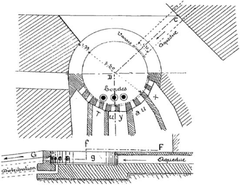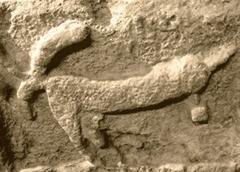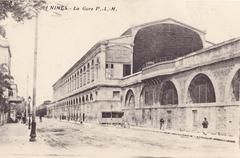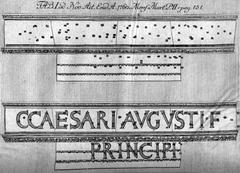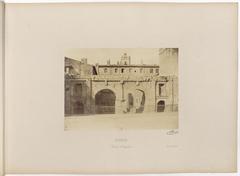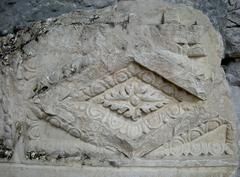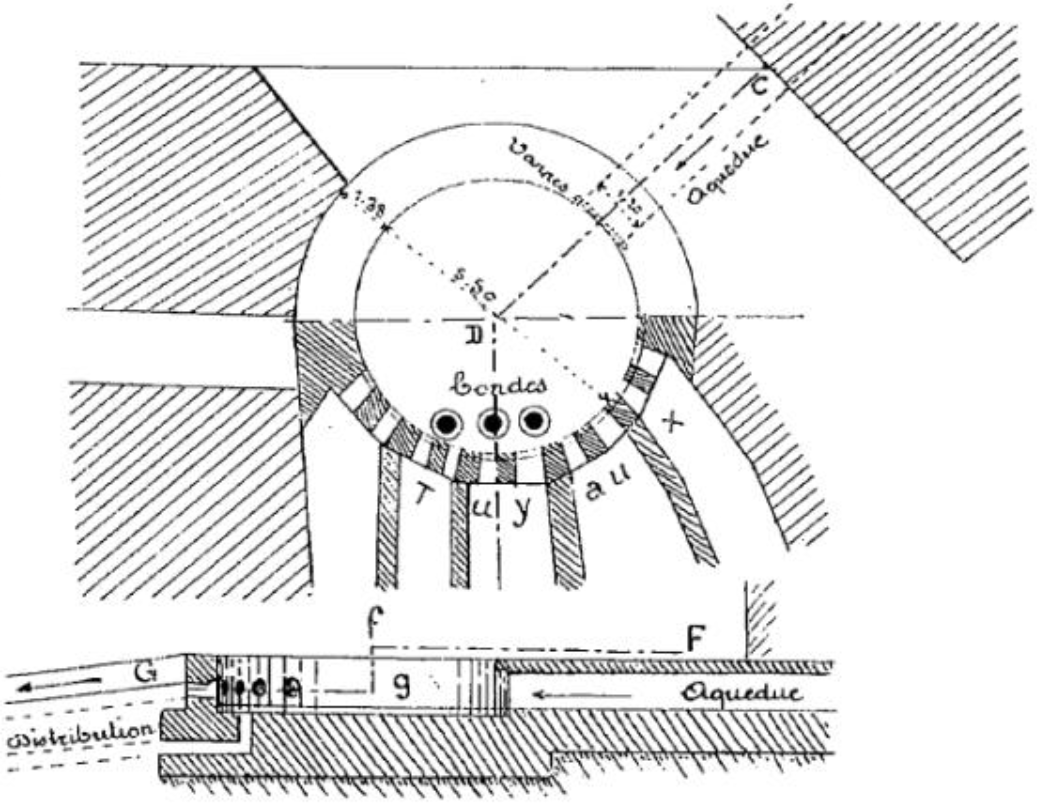
Visiting Hours, Tickets, and Historical Insights of Castellum Aquae in Nîmes
Publication Date: 24/07/2024
Introduction to Castellum Aquae
In the heart of Nîmes, France, lies a testament to Roman engineering prowess: the Castellum Aquae. This ancient structure, dating back to the mid-1st century AD, is an integral part of the city’s rich Roman heritage. The Castellum Aquae served as a crucial element of Nîmes’ water management system, ensuring a steady supply of water and facilitating efficient wastewater evacuation. The structure’s meticulous design and historical significance make it a must-visit for history enthusiasts and tourists alike. This comprehensive guide delves into the history, architectural brilliance, and practical visiting tips for the Castellum Aquae, offering a detailed overview for potential visitors (Nîmes Official Website).
Table of Contents
- Historical Context
- Architectural and Functional Design
- Cultural and Social Impact
- Rediscovery and Preservation
- Guided Tours
- Practical Tips
- FAQ Section
Historical Context
The Castellum Aquae in Nîmes, France, is a remarkable relic from the Roman era, dating back to the mid-1st century AD. Its construction, along with the renowned Pont du Gard, underscores the city’s continued development following the significant advancements during the reign of Emperor Augustus. The Castellum Aquae was integral to the city’s water management system, ensuring a reliable water supply and facilitating the evacuation of wastewater, particularly from the eastern parts of the city. This infrastructure allowed for the construction of new public baths between the forum and the Porte Auguste, enhancing the city’s urban landscape and public amenities (Nîmes Official Website).
Architectural and Functional Design
The Castellum Aquae is a circular water distribution basin, carved into the rock, with a diameter of 5.90 meters and a depth of 1.40 meters. The water from the Eure source in Uzès entered the basin obliquely through a nearly square opening. A valve equipped with a capstan regulated the water flow. The basin’s design included six square holes in the overlying slab, which allowed a grille to prevent unwanted intrusions. Lead pipes connected to ten circular orifices arranged in a fan shape on the basin’s wall, distributing water to various parts of the city through five masonry conduits covered with slabs (Nîmes Official Website).
The surplus water was directed to the sewer system, contributing to the city’s sanitation. Unlike the water distribution system in Pompeii, which prioritized public fountains, then public establishments, and finally private residences, the Castellum Aquae did not have a hierarchical distribution mechanism. However, numerous coins found at the site suggest that the edifice may have had a cultic role (Nîmes Official Website).
Cultural and Social Impact
The Castellum Aquae played a crucial role in enhancing the prestige of Nîmes by providing a reliable water supply, which was essential for the city’s growth and the well-being of its inhabitants. The availability of water facilitated the construction of public baths, fountains, and other amenities that were central to Roman urban life. This infrastructure not only improved the quality of life but also reflected the Roman emphasis on public health and hygiene.
The presence of the Castellum Aquae and the associated aqueduct system, including the Pont du Gard, underscored the engineering prowess of the Romans and their ability to create sophisticated water management systems. These structures were not only functional but also symbolized the power and technological advancement of the Roman Empire.
Rediscovery and Preservation
The Castellum Aquae was known until the 17th century but was seemingly buried during the construction of the citadel in 1688. It was rediscovered in 1844 by a private individual who undertook its excavation. This discovery was significant as it provided a rare glimpse into Roman water management systems, which had not been observed elsewhere in Europe at the time. The site was subsequently purchased by the city and the state and was classified as a historical monument (Nîmes Official Website).
Guided Tours
Guided tours are available, providing detailed information about the site’s history, architecture, and significance. These tours offer a deep dive into the Roman engineering marvels and the importance of water management in ancient urban planning.
Practical Tips
- Location: The Castellum Aquae is located in Nîmes, France, a city renowned for its rich Roman heritage.
- Accessibility: The site is accessible to the public, and visitors can explore the basin and its surroundings.
- Tickets: Entrance to the Castellum Aquae is free, but guided tours may have a fee. Check the Nîmes Official Website for updated information.
- Visiting Hours: The site is open daily from 9 AM to 7 PM. Hours may vary during holidays, so it’s advisable to confirm before your visit.
- Nearby Attractions: Visitors can also explore other Roman monuments in Nîmes, such as the Pont du Gard, the Maison Carrée, and the Arena of Nîmes, making for a comprehensive historical tour.
- Visitor Tips: It is advisable to wear comfortable walking shoes and bring water, especially during the summer months. Photography is allowed, so visitors can capture the intricate details of the site.
FAQ Section
What are the opening hours of Castellum Aquae?
The site is open daily from 9 AM to 7 PM. Hours may vary during holidays.
How much are the tickets?
Entrance to the Castellum Aquae is free, but guided tours may have a fee. Check the Nîmes Official Website for updated information.
Is there parking available?
Yes, there is parking available near the site. It’s advisable to check local parking regulations and availability.
Are there any special events or unique features at the site?
Occasionally, special events or exhibitions are held. Check the Nîmes Official Website for current events and updates.
Call to Action
Explore the Castellum Aquae and other historical wonders of Nîmes! Download our mobile app Audiala for guided tours, updates, and more. Follow us on social media for the latest news and events.
In conclusion, the Castellum Aquae is a significant historical and cultural landmark that offers valuable insights into Roman engineering and urban planning. Its preservation and accessibility make it a must-visit site for anyone interested in ancient history and the legacy of the Roman Empire.
Summary and Key Points
The Castellum Aquae stands as a remarkable relic of Roman engineering and urban planning, reflecting the ingenuity and advanced technological capabilities of the era. Its historical and cultural significance, coupled with its architectural marvel, makes it an essential destination for anyone exploring Nîmes’ rich Roman heritage. From its role in enhancing the city’s public amenities to its rediscovery and preservation, the Castellum Aquae offers valuable insights into the Roman way of life. Visitors can immerse themselves in the site’s history through guided tours, explore nearby Roman monuments, and appreciate the legacy of the Roman Empire. Plan your visit to the Castellum Aquae and witness firsthand the marvels of ancient engineering (Nîmes Official Website).
References and Further Reading
- Nîmes Official Website. (n.d.). Retrieved from https://www.nimes.fr/decouvrir/histoire-et-patrimoine/le-castellum.html
